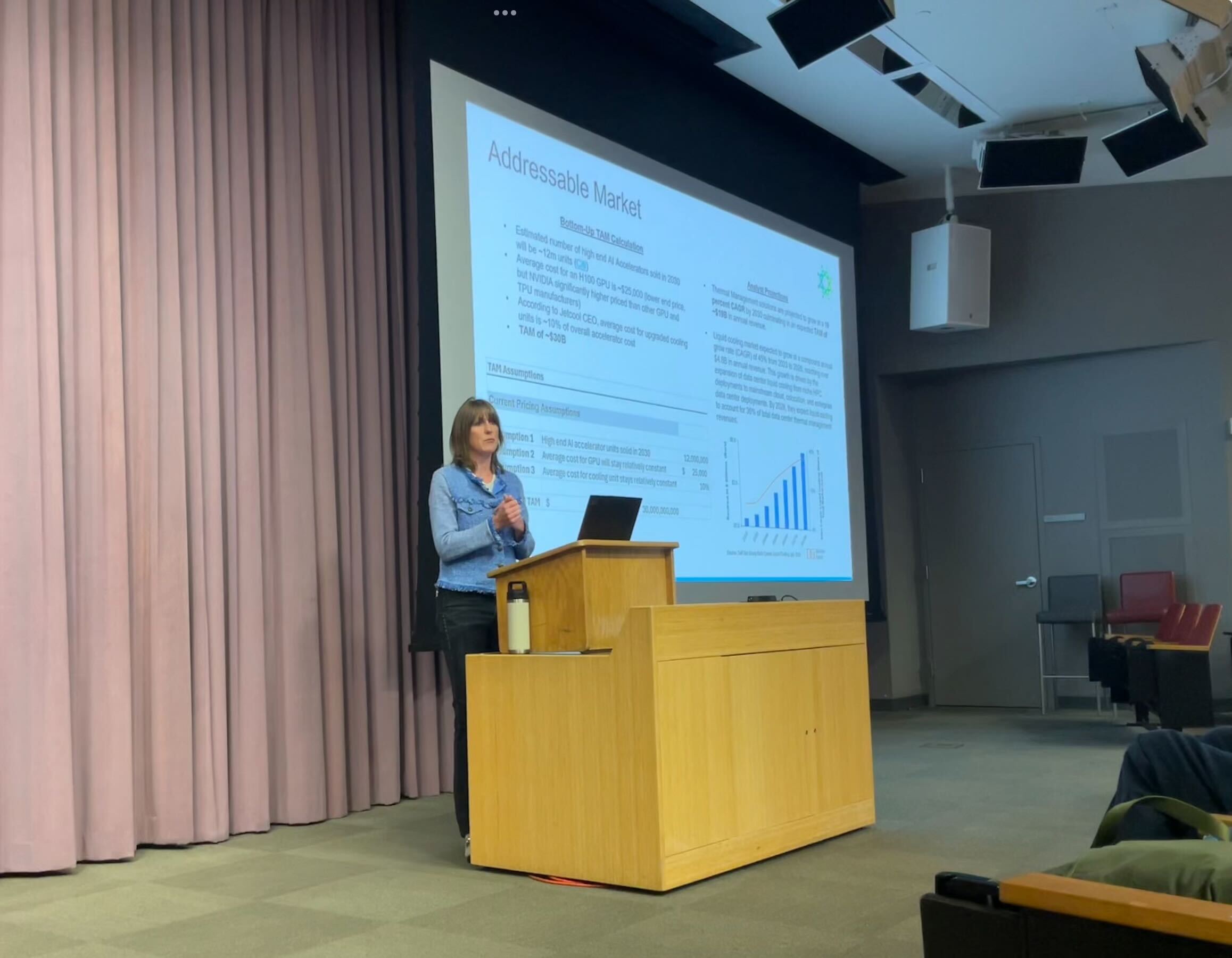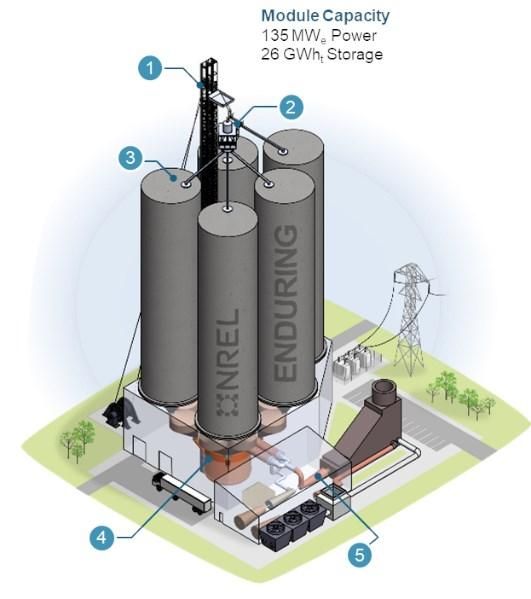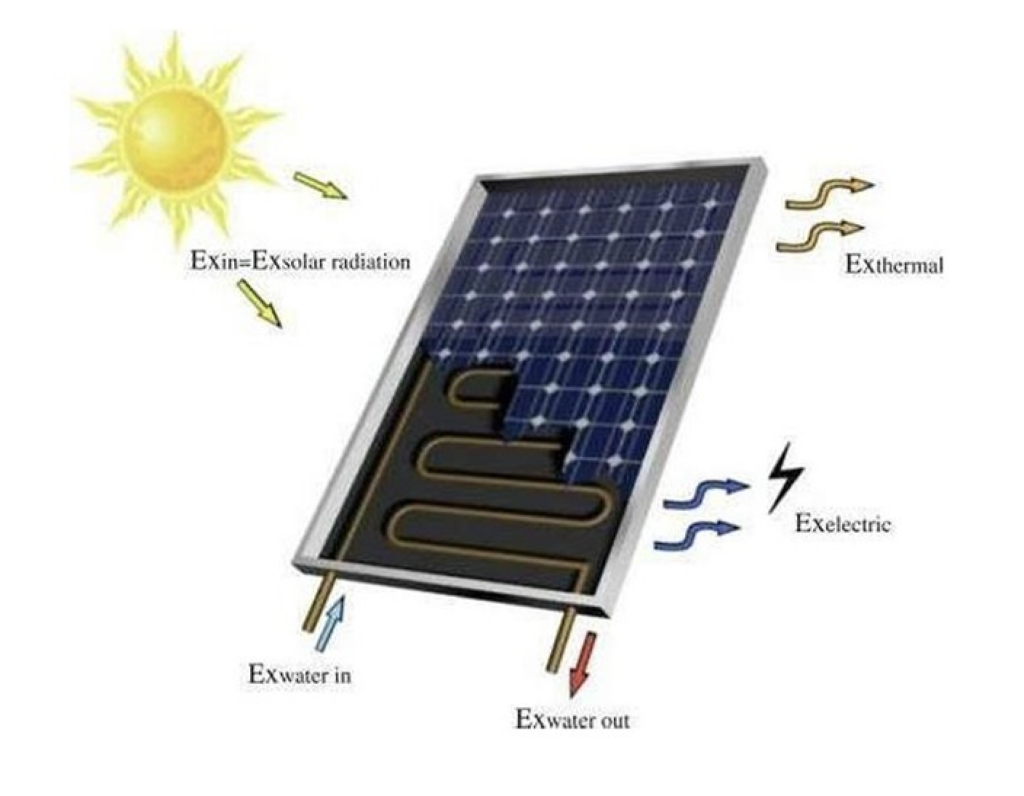Bruce McPherson: I support a battery energy storage ordinance that addresses climate change and ensures local safety – Lookout Santa Cruz

Report on the Proposed Battery Energy Storage System (BESS) Ordinance for Santa Cruz County
Executive Summary
A proposal has been put forth by Former Supervisor Bruce McPherson urging the Santa Cruz County Board of Supervisors to advance a new ordinance regulating Battery Energy Storage Systems (BESS). The ordinance is presented as a critical measure for achieving local climate action goals, enhancing energy infrastructure resilience, and ensuring public safety. This initiative directly supports several United Nations Sustainable Development Goals (SDGs), particularly those related to clean energy, climate action, and sustainable communities. The proposed regulations are a direct response to safety failures observed at the Moss Landing facility, aiming to establish a framework that allows for the benefits of BESS technology while mitigating risks.
Alignment with Sustainable Development Goals (SDGs)
The implementation of a BESS ordinance is integral to advancing the following SDGs:
- SDG 7: Affordable and Clean Energy: BESS technology is fundamental to increasing the share of renewable energy in the local power grid. By storing energy generated from solar and wind, BESS ensures a reliable and consistent supply of clean power, reducing dependence on fossil fuels and supporting the transition to a sustainable energy system.
- SDG 13: Climate Action: The ordinance facilitates a significant reduction in greenhouse gas emissions by enabling the replacement of fossil-fuel “peaker plants” with clean, stored energy. This represents a tangible local action to combat climate change and its impacts.
- SDG 11: Sustainable Cities and Communities: Local BESS installations enhance the resilience of community infrastructure by preventing power outages that affect residents, agriculture, and healthcare sectors. The ordinance’s focus on safety and local control ensures that this infrastructure development is sustainable and safe for the community.
- SDG 9: Industry, Innovation, and Infrastructure: The ordinance promotes investment in modern, reliable, and sustainable energy infrastructure, fostering innovation in energy storage while establishing robust regulatory frameworks.
- SDG 3: Good Health and Well-being: By reducing the reliance on fossil fuels for electricity generation, the ordinance will contribute to lower air pollution, which is linked to an estimated 12,000 deaths annually in California, thereby promoting public health.
Provisions for Safety and Community Protection
The proposed ordinance incorporates stringent safety measures learned from the failures of the Moss Landing fire. The key issues at Moss Landing and the ordinance’s corresponding solutions are outlined below.
Analysis of the Moss Landing Incident
- Hazardous Materials: The facility utilized volatile lithium chemistry (nickel manganese cobalt – NMC), which is not optimized for large-scale storage.
- Unsafe Siting: Approximately 100,000 batteries were co-located within an old building, increasing catastrophic fire risk.
- Inadequate Fire Suppression: The facility relied on a basic water sprinkler system, which was insufficient for a chemical fire.
Safety Mandates in the Proposed Ordinance
- Prohibition of Volatile Chemistries: The ordinance explicitly bans the use of NMC chemistry in BESS projects.
- Secure and Separated Housing: Projects cannot be located inside buildings and must use separated, fire-safe containers to house batteries.
- Comprehensive Safety Protocols: The ordinance mandates rigorous safety standards, including:
- Inspections by local fire officials.
- Continuous 24/7 site monitoring and alarm systems.
- Proof of large-scale safety testing.
- Specialized training for first responders.
- Compliance with national fire certifications.
Governance, Local Control, and Stakeholder Support
The establishment of a county-level BESS ordinance is crucial for maintaining local authority over energy projects. Without a local framework, developers could utilize state law (Assembly Bill 205) to bypass the local permitting process and seek approval directly from the California Energy Commission. The developer of a proposed project on Minto Road has indicated a willingness to adhere to the county’s strict ordinance if it is advanced, ensuring local environmental review and community input.
Support for the ordinance is growing among key stakeholders:
- The Santa Cruz County Commission on the Environment has recommended the integration of BESS into the county’s energy and land use policies.
- Watsonville Wetlands Watch has publicly announced its support for BESS in the county.
Recommendation
It is recommended that the Santa Cruz County Board of Supervisors approve the draft BESS ordinance to proceed to the environmental review and public input stages. This action is vital for aligning the county’s development with global sustainability targets, ensuring community safety, and preserving local control over the region’s transition to a clean energy future.
Analysis of Sustainable Development Goals in the Article
1. Which SDGs are addressed or connected to the issues highlighted in the article?
-
SDG 7: Affordable and Clean Energy
- The article focuses on the transition to renewable energy, such as solar and wind, and highlights the critical role of Battery Energy Storage Systems (BESS) in this process. It states that BESS is needed “to store energy during the day for use in the evening to meet peak periods of demand,” which is fundamental to making renewable energy a reliable power source.
-
SDG 13: Climate Action
- The primary motivation for the BESS ordinance is explicitly linked to combating climate change. The article quotes Bruce McPherson, who states he was motivated by “the need to update our planning codes to support our transition to renewable energy in the fight against climate change.” It further argues that “without BESS, we’re stuck with fossil fuels, which drive climate change.”
-
SDG 11: Sustainable Cities and Communities
- The article addresses the need for resilient and safe community infrastructure. It points out that BESS is a “key solution to preventing power outages that continue to plague our communities” and will “ensure more reliable electricity for residents, as well as our crucial agricultural, health care and commercial sectors.” Furthermore, the proposed ordinance includes strict safety regulations (“banning volatile battery chemistries, requiring fire-safe containers and mandating strict inspections”) to protect the community, directly responding to the Moss Landing fire disaster.
-
SDG 3: Good Health and Well-being
- The article connects the shift away from fossil fuels to public health improvements. It mentions that “Air pollution causes an estimated 12,000 deaths annually in California” and identifies fossil-fuel-powered “peaker plants” as a “major contributor.” By enabling the reduction of fossil fuels, the BESS ordinance aims to improve air quality and reduce related health risks.
-
SDG 9: Industry, Innovation, and Infrastructure
- The discussion revolves around developing modern, sustainable, and resilient energy infrastructure. The implementation of BESS represents an upgrade to the local power grid, making it more reliable and capable of integrating clean technologies. The ordinance itself is an innovative local policy designed to manage this new infrastructure safely and effectively.
2. What specific targets under those SDGs can be identified based on the article’s content?
-
SDG 7: Affordable and Clean Energy
- Target 7.2: “By 2030, increase substantially the share of renewable energy in the global energy mix.” The article directly supports this by explaining that BESS is essential for the viability of solar and wind power, thereby helping to increase their share in the local energy supply.
- Target 7.1: “By 2030, ensure universal access to affordable, reliable and modern energy services.” The article’s emphasis on BESS as a solution to “preventing power outages” and ensuring “more reliable electricity” for residents and key sectors aligns with the goal of providing reliable energy services.
-
SDG 13: Climate Action
- Target 13.2: “Integrate climate change measures into national policies, strategies and planning.” The proposed county ordinance is a clear example of integrating climate change mitigation measures into local-level planning and policy, as it is designed to “support our transition to renewable energy in the fight against climate change.”
-
SDG 11: Sustainable Cities and Communities
- Target 11.6: “By 2030, reduce the adverse per capita environmental impact of cities, including by paying special attention to air quality…” The article’s goal to “cut back on California’s reliance on fossil fuels for electricity” and reduce pollution from “peaker plants” directly addresses the need to improve urban air quality.
- Target 11.b: “By 2020, substantially increase the number of cities and human settlements adopting and implementing integrated policies and plans towards… mitigation and adaptation to climate change, disaster risk reduction…” The BESS ordinance is a local policy that integrates climate change mitigation with disaster risk reduction by setting strict safety standards to prevent fires like the one in Moss Landing.
-
SDG 3: Good Health and Well-being
- Target 3.9: “By 2030, substantially reduce the number of deaths and illnesses from hazardous chemicals and air… pollution and contamination.” The article explicitly links the reduction of fossil fuel use, enabled by BESS, to a decrease in air pollution, which it states causes “an estimated 12,000 deaths annually in California.”
-
SDG 9: Industry, Innovation, and Infrastructure
- Target 9.1: “Develop quality, reliable, sustainable and resilient infrastructure…” The article advocates for BESS to create a more reliable and resilient local power grid, preventing outages and supporting critical sectors.
- Target 9.4: “By 2030, upgrade infrastructure… with… greater adoption of clean and environmentally sound technologies…” The adoption of BESS to support renewable energy is a direct example of upgrading energy infrastructure with clean technology.
3. Are there any indicators mentioned or implied in the article that can be used to measure progress towards the identified targets?
-
For SDG 7 (Affordable and Clean Energy)
- Implied Indicator: The increase in the share of renewable energy (solar, wind) in the local power grid of Santa Cruz County.
- Implied Indicator: A reduction in the frequency and duration of power outages, particularly in “South County and Mid-County.”
-
For SDG 13 (Climate Action)
- Direct Indicator: The formal adoption and implementation of the Santa Cruz County BESS ordinance, which integrates climate action into local policy.
-
For SDG 11 (Sustainable Cities and Communities)
- Implied Indicator: A measurable reduction in air pollution from the decreased use of fossil-fuel “peaker plants.”
- Direct Indicator: The number of BESS projects developed in compliance with the new safety standards, such as the ban on NMC chemistry, use of fire-safe containers, and mandatory inspections by fire officials.
-
For SDG 3 (Good Health and Well-being)
- Implied Indicator: A reduction in local mortality and morbidity rates attributable to air pollution, referencing the baseline context of “12,000 deaths annually in California.”
-
For SDG 9 (Industry, Innovation, and Infrastructure)
- Implied Indicator: The total installed capacity (in megawatts) of new BESS infrastructure built under the ordinance.
- Direct Indicator: Full compliance of new BESS projects with the ordinance’s safety requirements, including “24/7 site monitoring and alarm systems, proof of large-scale testing, training for first responders and national fire certification compliance.”
4. Summary Table of SDGs, Targets, and Indicators
| SDGs | Targets | Indicators |
|---|---|---|
| SDG 7: Affordable and Clean Energy | 7.2: Increase the share of renewable energy. 7.1: Ensure access to reliable and modern energy. |
– Increased share of renewable energy in the local grid. – Reduction in the frequency and duration of power outages. |
| SDG 13: Climate Action | 13.2: Integrate climate change measures into policies and planning. | – Adoption and implementation of the county’s BESS ordinance. |
| SDG 11: Sustainable Cities and Communities | 11.6: Reduce the adverse per capita environmental impact of cities (e.g., air quality). 11.b: Implement integrated policies for climate change mitigation and disaster risk reduction. |
– Reduction in air pollution from “peaker plants.” – Number of BESS projects complying with new safety regulations (e.g., ban on NMC chemistry, fire-safe containers). |
| SDG 3: Good Health and Well-being | 3.9: Substantially reduce deaths and illnesses from air pollution. | – Reduction in deaths attributable to air pollution, linked to decreased fossil fuel use. |
| SDG 9: Industry, Innovation, and Infrastructure | 9.1: Develop quality, reliable, sustainable and resilient infrastructure. 9.4: Upgrade infrastructure with clean and environmentally sound technologies. |
– Total installed capacity of new BESS infrastructure. – Compliance of new projects with safety and monitoring requirements. |
Source: lookout.co
What is Your Reaction?
 Like
0
Like
0
 Dislike
0
Dislike
0
 Love
0
Love
0
 Funny
0
Funny
0
 Angry
0
Angry
0
 Sad
0
Sad
0
 Wow
0
Wow
0
















































:focal(1500,1000)/https://media.globalcitizen.org/a6/9a/a69a4720-d8a1-4715-b596-18738d03c05c/rotary_polio_hero_image.jpg?#)







/countries/sri-lanka/photo-credit---dmc-sri-lanka.tmb-1200v.jpg?sfvrsn=dc298bcc_1#)

















